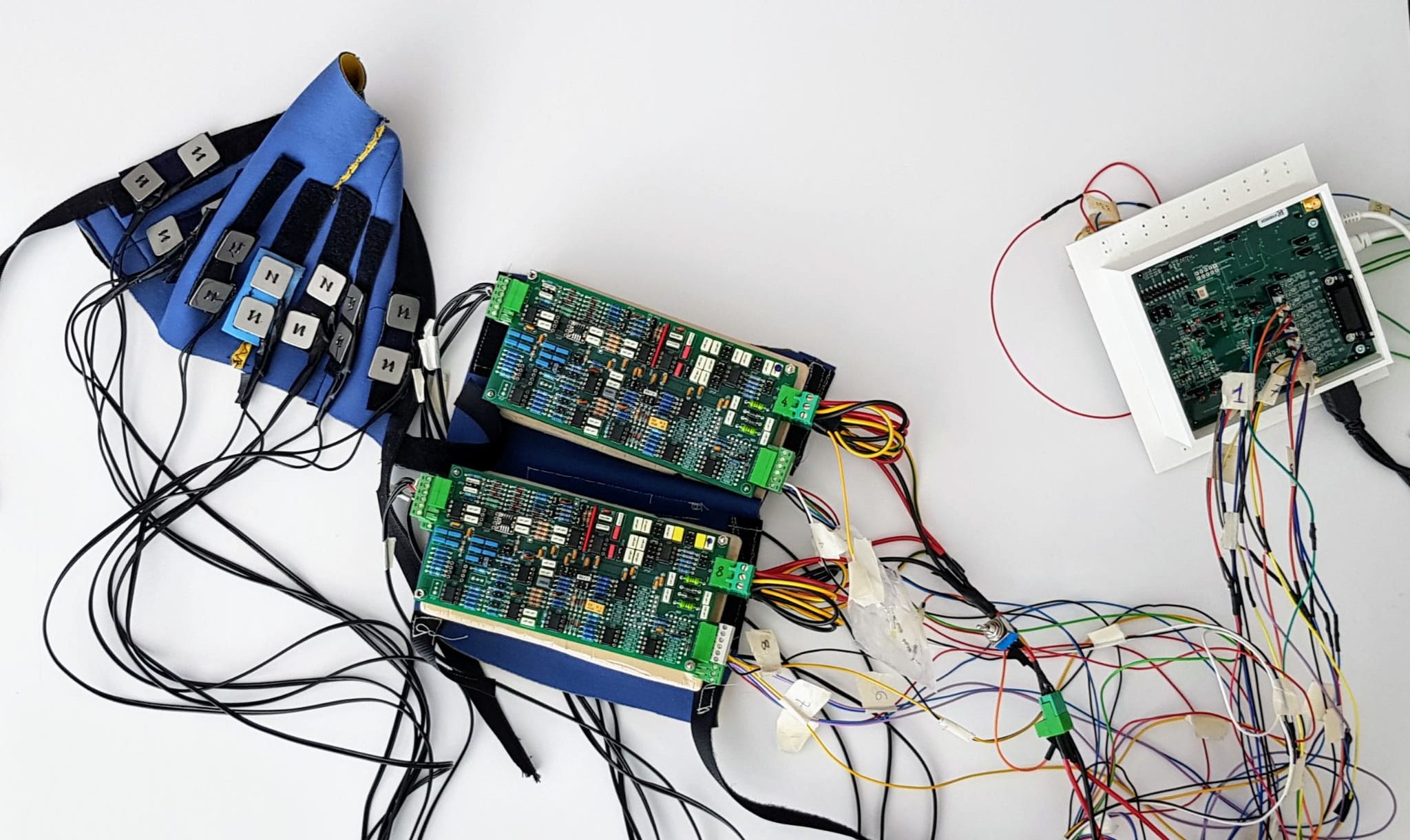Gesture Recognition with LSTM Classification of sEmg Signals for Prosthetic Control
Developed by Irene Sorianini, Federico Gala
Supervised by Nicola Covre, Prof. Mariolino De Cecco and Prof. Davide Brunelli.
Conditioning System Development by Ing. Antonio Selmo
Supported by Mirolab, Università degli Studi di Trento
From zero to hand movement control, the Mirolab presents the ambitious thesis project developed by Engineering Master course students, Irene Sorianini and Federico Gala. The project implements a deep-learning application for gesture classification and control of the prosthetic hand by monitoring the forearm muscles. A sEMG acquisition prototype allows the monitoring of muscle activity with high performance, versatility and low production costs. The results returned a high level of accuracy during test classification, which was followed by an on-line test to assess repeatability.
A series of hand crafted dry electrodes applied to the forearm collects the sEMG signals which, after processing, are classified by a machine learning model that returns visual feedback to operate a simple robotic hand.
The high accuracy in classification is achieved through data augmentation methods that aims to restrict the unavoidable limitations rasing when dealing with human factors.
At the moment the system involved a LSTM machine learning model that has been compared with other deep neural network model, such as CNN and DNN, showing more robustness and accuracy. The mis-classification are minimized with the introduction of parallel LSTM neural networks dedicated to specific gesture recognition.
The acquisition system consist of five elements. A neoprene cuff with integrated electrodes, an analog conditioning system for system for signal filtering and amplification, a high-perfomance ADC version system and a raspberry unit for digital dataprocessing. The electrodes are obtained by cutting 16 simple metal plates of size 20x20x1 mm and soldering the copper connector. Wiring is via coaxial cables to reduce noise of the 50 Hz mains voltage. The conditioning system has an amplification gain of 500 while flexing the signal at 500 Hz with a low pass filter, 50 Hz with a notch filter and at 20 Hz with high-pass filter. The ADC samples the 8 channels at approximatly 32 KSPS (4000 Hz per channel).

